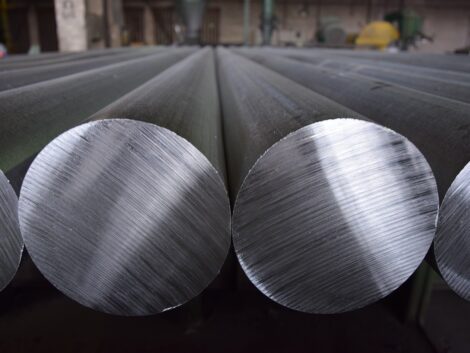Global aluminium demand to rise by over 30%
A new report has revealed that global aluminium demand will increase by almost 40% by 2030 and that the aluminium sector will need to produce an additional 33.3 Mt to meet demand growth in all industrial sectors – from 86.2 Mt in 2020 to119.5 Mt in 2030.
The study, Opportunities For Aluminium In A Post-Covid Economy, conducted by business intelligence analysts CRU International on behalf of the International Aluminium Institute (IAI), details demand across key industrial sectors and regions in a post-Covid economy. Transportation, construction, packaging and the electrical sectors are the four key sectors that will drive demand, accounting for 75% of the total metal required.
Two-thirds of this growth is expected to come from China, which will require 12.3 Mt, and the rest of Asia adding a further 8.6Mt, North America 5.1Mt and Europe 4.8Mt. Together, these four regions alone will account for more than 90% of the additional aluminium required globally.
Commenting on the report findings, IAI Secretary-General, Miles Prosser said: The IAI commissioned this report to better understand the drivers of future aluminium demand and to ascertain what we need to do as an industry to meet consumer expectations on both demand and sustainability. The figures in today’s report show that as society increasingly focuses on efficiency and sustainability, so are the market opportunities for aluminium. Within each of the sectors, key drivers of demand are linked to sustainability and climate change issues.”
According to the report, decarbonisation policies plus a shift from fossil fuels in the transport sector will see an increase in EV production to 31.7Mt in 2030 (compared to 19.9 in 2020).
Renewable energy demands will also see a rise in demand for aluminium for solar panels, as well as replacing existing copper cabling for power distribution. In total, the electric sector will require an additional 5.2 Mt by 2030.
The construction sector will require an additional 4.6Mt by the end of the decade. Urbanisation will account for 44% of growth, coming from Asia (excluding China).
Aluminium packaging will rise from 7.2Mt in 2020 to 10.5Mt in 2030, driven by an increase in the popularity of canned drinks across North America, Europe and China. A surge in demand for environmentally friendly packaging combined with new products is also behind the increase.
CRU’s Head of Aluminium, Zaid Aljanabi said: “The aluminium industry has an opportunity to continue to advance its sustainability credentials; listen and respond to consumer expectations; and work along the value chain to deliver more sustainable products and services to consumers. CRU Consulting has been advising clients in the aluminium industry for more than four decades, providing independent and proprietary advice to clients across the value chain”
For the last 50 years, the IAI has been the voice for the global primary aluminium industry, promoting the benefits of this valuable resource. With comprehensive global data and material flow analysis, the IAI can provide the necessary information and pathways for the industry, consistent with global climate goals.
Prosser added: “As we seek a sustainable future in a decarbonised world, aluminium has the qualities that consumers seek – strength, lightweight, versatile, corrosion-resistant, a good conductor of heat and electricity and is recyclable. Around 75% of the almost 1.5 billion tonnes of aluminium ever produced is still in productive use today.
“This metal has been at the forefront of many industrial and engineering innovations of the 20th century and continues to power a sustainable future. Meeting growing demand sustainably is a challenge for the entire value chain but the industry has the expertise and passion to find the solutions needed to reduce the carbon intensity of our primary metal.”








